For years, homeowners have known only one type of sink: the drop-in sink. It comes in a wide range of styles, materials, and colors.
Recently, another player entered the sink market—the undermount sink.
And then homeowners suddenly become divided into those who stick with drop-in and those who swear by the undermount sinks.
If you’re on the market for a sink for the first time or replacement, you might be asking yourself which side of the two sinks you should fall in.
We have compared these two sink styles head to head to help you make a wiser decision.
Undermount vs drop in sink: the basics
Before we get into the comparison part, it’s crucial that you understand the basics of the undermount and drop in sinks and what exactly they entail.
The drop-in sink is also known as a top-mount or rimmed sink. From its name, you can easily guess that this sink is designed for installation from the top of your sink cabinet into the available sink cutout opening. This sink features a rim that rests on the countertop to help support it. Hence, the name rimmed sink.
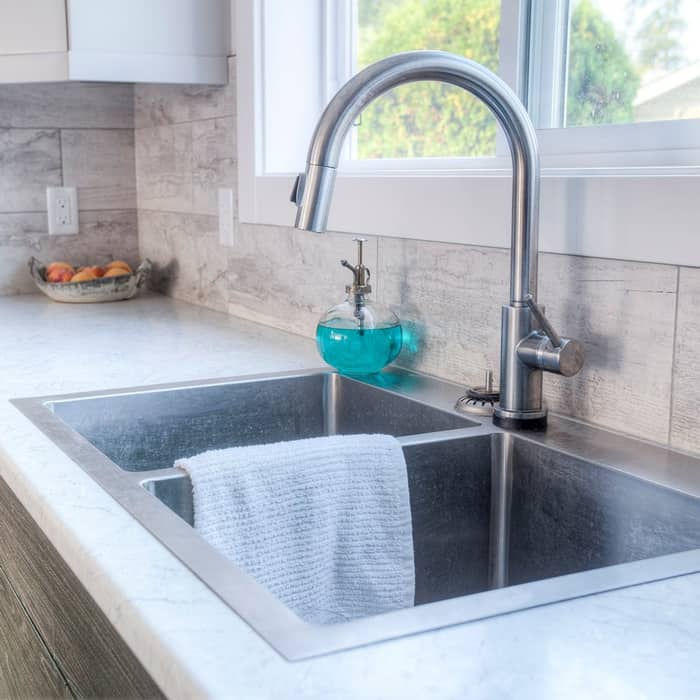
An under-mount sink is the exact opposite of a drop-in sink. It comes attached to the underside of your countertop, inside the sink cabinet.
Unlike the top mount model, this sink is entirely rimless and relies on anchor blocks for support. You must install these support blocks during installation to ensure your sink mounts safely under the countertop.
Undermount vs drop in sink compared
In this part, we’ll compare the two styles of sinks side by side to help you create a clear visual picture of which one will match your needs and expectations.

We’ll compare these sinks along critical aspects to make this comparison easy for you to comprehend.
1. Looks
Without a doubt, one of the things you’ll always look at when shopping for a new sink for your kitchen or bathroom is the looks.
Drop-in sinks have a more traditional appearance and come in various colors and designs to match different kitchen styles. For instance, you can get an enameled cast iron or porcelain top mount sink if you have a vintage-style kitchen.
When you install under-mount sink in your kitchen, they will offer a clean, streamlined look that goes well with contemporary style kitchens. The effect gets more robust if you choose a sink featuring the same material as your countertop.
2. Ease of installation
Most people avoid undermount sinks because they’re a pain to install. It would help to fit them in place and temporarily support them while you mark the anchoring clip locations. You’ll need to take the sink out to drill the marked holes into the countertop and install clips.
You’ll also need to create support for your under counter sink and glue it in place with silicone sealant, epoxy, or construction adhesive. Undermount sinks aren’t easy to install.
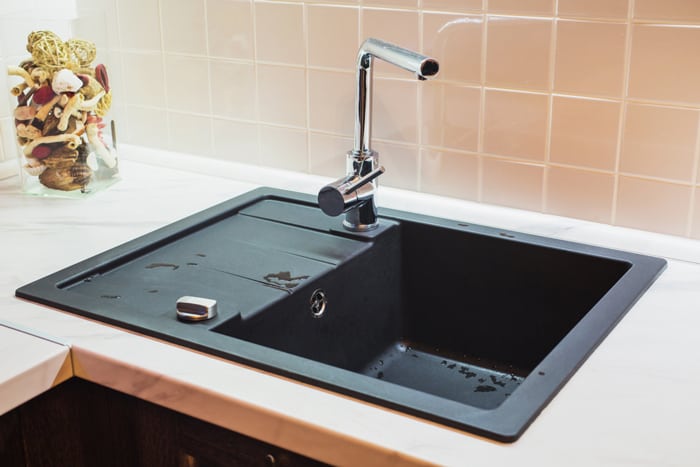
A drop-in sink is generally easy to install, and you can do it on your own, especially if you’re replacing a new model with the same size as the old sink. You take out the existing sink, clean away the old caulk, apply fresh caulk, and then drop in the new sink in the visiting sink hole cutout.
3. Countertop compatibility
Another thing to consider when choosing between undermount and drop in sink is which one will work with your countertop material.
Top-mount sinks will work with all countertops. Whether you have a laminate, solid surface, tile, composite or natural stone countertop, a drop-in will go in nicely without any problems.
Under-mount sinks can work with all countertop materials but laminate and custom tile tops. In the case of laminate, the underlying particleboard or MDF base fails to hold the sink clip fastener well, making the installation less durable. The material is also highly vulnerable to moisture damage.
4. Ease of cleaning
The rim of a drop-in sink can quickly gather food crumbs and make cleaning your countertop a bit challenging. The caulk used to join the edge to the top can also get discolored and wear out with time, so you’ll need to give it regular maintenance.
Though some top mount sinks have a low profile rim to facilitate easy cleaning, the experience is still nothing compared to what you get with an under mount unit.
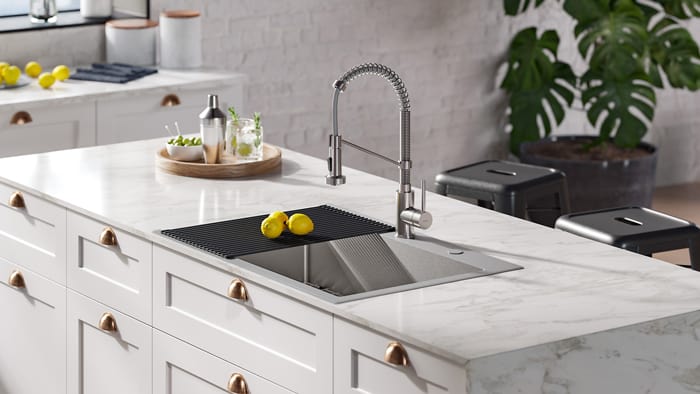
The lack of rim between the countertop and sink makes your countertop easy to clean as you need to sweep the food crumbs straight into your sink. You also won’t have to worry about the buildup of gunk along the sink rim.
Unfortunately, the gap at the top of the under mount sink has become a spot for gunk to accumulate. That’s why we encourage encouraged to replace the caulk every three-five years.
5. Countertop space saver
In an under-mount sink setting, the countertop extends to your sink. Some can even go a bit further. It makes these types of sinks a great choice if you want to save as much counter space as possible. A plus for under-mount is a deeper design to compensate for the lack of rim.
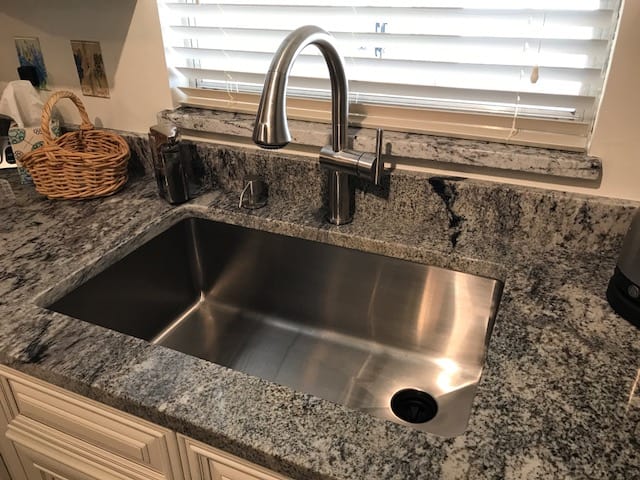
Top mount sinks tend to take up a few inches of your counter space with their rimmed design that fits on the top. It might not sound like a sizeable space, but if you have tight space in your kitchen, you might need this space to store your dish soap, bushes, etc.
Luckily, there’s a style of drop-in sink that can help you save space if you still want to go with a top mount sink. It is the drainboard sink. It comes with an integrated drainboard or food prep area extending eight to 10 inches beyond the side of the sink basin.
6. Cost
One of the reasons why drop-in sinks are still popular is that they come at budget-friendly prices and can save you up to $100 in total costs. And as we stated earlier, the sink is easy to install, and you do it on your own if you’re a handyman.
If you choose to hire a professional to install your drop-in sink, you’ll pay less because the process is pretty simple.
Under-mount sinks come at higher costs. You can expect high-quality under-mount sinks to cost you 50-100% more than top mount sinks. Since they’re challenging to install, their setup costs are also high.
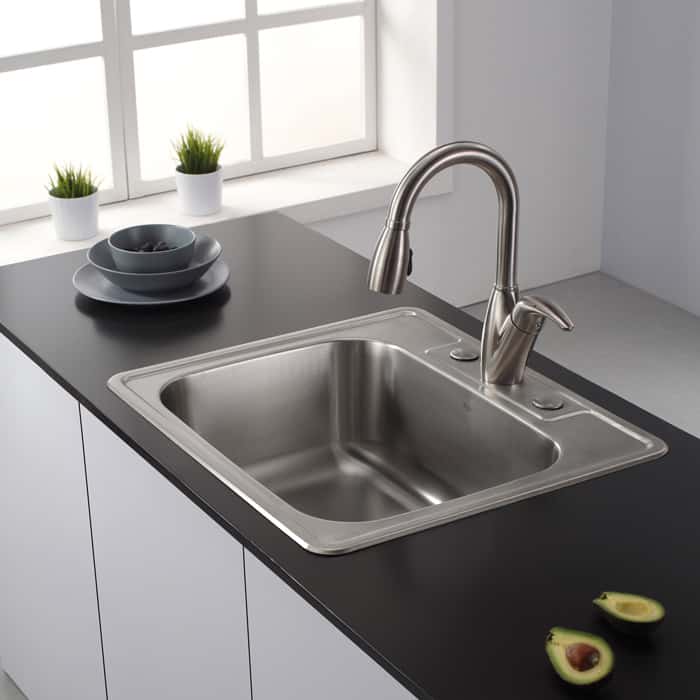
But the advantage of installing an under mount is that it can raise your home resale value. The custom, high-end feel of the under mount model, can positively affect your home’s resale value to your home.
Undermount vs drop in sink: pros and cons
Before we bring to an end our discussion on the undermount vs drop in sink, let’s quickly summarize the key upsides and downsides of each type of sink below.
Undermount sink pros:
- Easier to clean countertop
- Great streamlined looks
- Increases countertop space
- High resale value
Undermount sink cons:
- Difficult to install
- Expensive
- Hard to clean the sink sides and edges
Drop in sink pros:
- Affordable
- Easy to install
- Comes in a wide variety of materials
Drop in sink cons:
- Takes up counter space
- Harder to clean the countertop
Final verdict
So, that’s all you need to know regarding undermount vs drop-in sink styles. Whether you’re new to sinks or replacing an old sink in your kitchen or bathroom, it’s essential to understand the two sinks and how they differ before you decide.
Having compared these two sinks side by side and brought the key highlights and lowlights of each of them, we’re hopeful that you can now easily decide which one will fit your unique needs and expectations.

